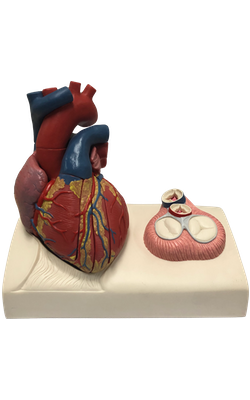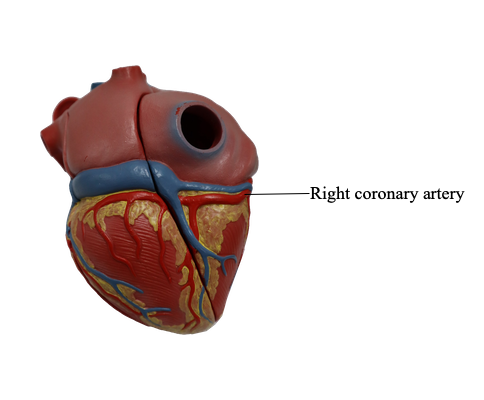Main Model

Right coronary artery

The right coronary artery arises from the
right aortic sinus of the ascending aorta and passes to the right side of the
pulmonary trunk, running in the coronary sulcus. Near
its origin, the right coronary artery usually gives off an ascending sinoatrial nodal branch, which supplies the sinoatrial node. The right coronary artery then descends in
the coronary sulcus and gives off the right marginal
branch, which supplies the right
border of the heart as it runs toward (but does not reach) the apex of the
heart. After giving off this branch, the right coronary artery turns to the left and continues in
the coronary sulcus to the posterior aspect of the heart. At the posterior
aspect of the crux (Latin cross) of the heart - the junction of the interatrial and interventricular septa between
the four heart chambers - the right coronary artery gives rise to the atrioventricular nodal branch, which supplies the atrioventricular node. The sinoatrial and atrioventricular nodes are
part of the conducting system of the
heart.
Typically, the right coronary artery supplies:
• The right atrium
• Most of the right ventricle
• Part of the left ventricle (the diaphragmatic surface)
• Part of the interventricular septum, usually the posterior third
• The sinoatrial node (in approximately 60% of people)
• The atrioventricular node (in approximately 80% of people)